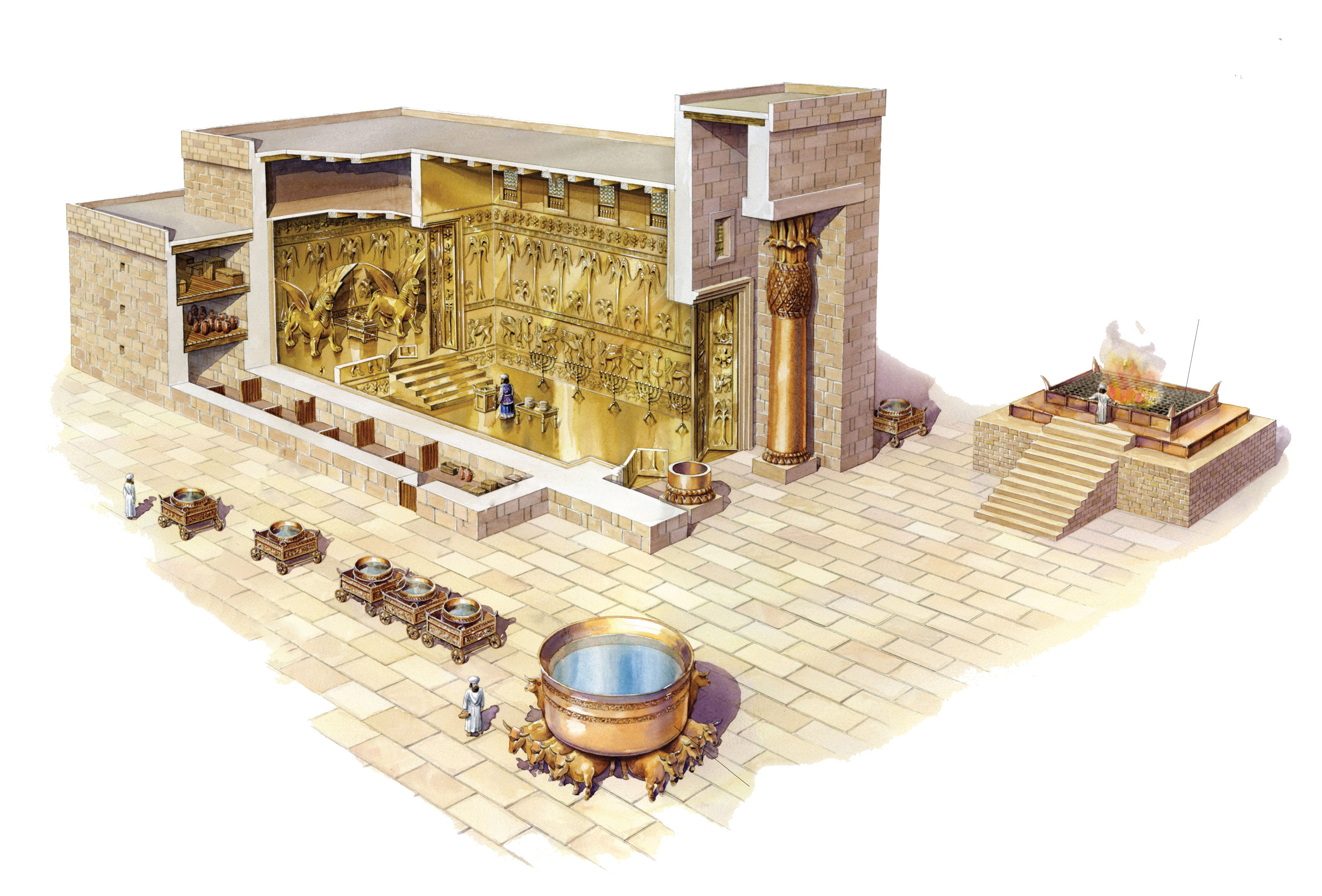Get Today in Masonic History into your Inbox. Sign up today for one of our email lists!
Need an article for your Trestleboard/Newsletter see our Use Policy
King Solomon's Temple

Today in Masonic History we discuss King Solomon's Temple.
King Solomon's Temple is a biblical structure built in Jerusalem during the reign of King Solomon.
King Solomon's Temple, here after simply called the Temple or the First Temple, is believed to have been built some time around the 9th or 10th century B.C.E. Most of the details known about the Temple come from the Hebrew Bible or Old Testament.
The dimensions of the Temple are given in cubits. A cubit is roughly the distance from the tip of your middle finger to the base of the elbow. In fact the word cubit in English comes from the Latin word cubitum which means elbow. The Temple is described as being 20 cubits wide, 60 cubits long and 30 cubits high. It consisted of three areas inside the structure and two courts which surrounded the Temple where priests and others assembled for prayer. There were also chambers built on the south, west and north side of the Temple. The chambers were believed to be for storage of some kind.
The three inside areas of the Temple consisted of the Porch or Vestibule, the Holy Place or Great House and the Holy of Holies or Inner House.
The Porch is described as 20 cubits in width with two great pillars standing on either side of the porch. It was 10 cubits deep. The Porch is stated to have been 120 cubits high. It is unclear by the descriptions given in the Bible whether a wall separated the Porch from the Great House.
The Great House was 30 cubits high, 40 cubits in length and 20 cubits in width. The walls were wooden and covered in gold. They had carvings of palm trees, flowers in bloom and cherubim.
The final and most sacred portion of the Temple was the Holy of Holies, the inner most room of the Temple. The room is described as being a perfect cube, 20 cubits in width height and length. The discrepancy of the missing 10 cubits from the height has been explained by the belief the Holy of Holies was actually elevated and there was a space underneath. The Holy of Holies is believed to have contained all of the sacred relics of the time. This included the seven branched candlestick and more importantly the Ark of the Covenant.
There is no archaeological evidence the Temple ever existed. Most scholars agree it did exist and when, roughly, it was built. There has been no real excavation of the Temple Mount since the late 1800's. This is due to the religious conflicts existing in the region.
For Freemasonry Solomon's Temple has become a metaphor for the building up of the individual into a better person and member of society. The stones used in the building of the Temple become metaphors for the good deeds and knowledge one gains in life and through positive life experiences.
This article provided by Brother Eric C. Steele.

